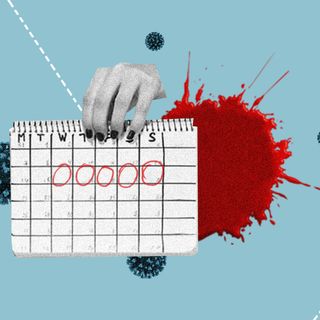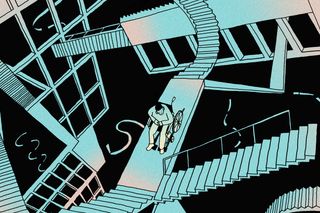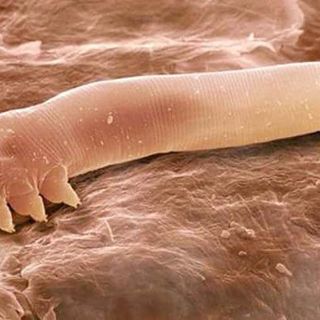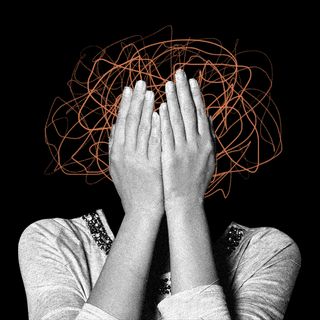
What It’s Like to Live With: Muscular Dystrophy.
“Nobody knows about muscular dystrophy and that it’s an irreversible muscle wasting process, so I will never be fine again.”

What It’s Like to Live With explores the stories of people who see and experience every day a little differently.
I’m a 28-year-old graphic designer who grew up playing football. About four years ago, I noticed that I wasn’t being able to kick the ball the way I used to and felt my leg muscles becoming weak. I went to a physiotherapist who told me it could be because of an injury or a muscle tear. After some routine check-ups, all my reports were normal.
But I continued feeling weak and realized I wasn’t being able to lift weights, walk backward, or use the staircase. When these symptoms didn’t stop for a year, my father, who was a pharmacist at Bombay Hospital, approached a neurological physician in the same hospital. After a genetic test, the doctor diagnosed me with limb-girdle muscular dystrophy type 2B (MD), which causes muscle weakness and wasting (atrophy) of the muscles of the pelvis region and shoulder girdle.
I remember feeling devastated when the doctor broke the news to me and my family. My first reaction was, “Why me?” and everything was a blur. As a 24-year-old, I had only started to work towards building a future, and suddenly, I had no idea what it was going to look like. How many years did I have before I was going to become wheel-chair bound? How would it impact my professional and personal life? I had so many questions but had nobody to answer them for me. Even the doctors didn’t know much about the severity of the disease, but they did warn me that it would shorten my life span. Over the next few days, we tried to make a family tree and call extended family members to understand if anyone in the family had it, because it’s a genetic disease, but had no luck with that. It was time to accept it and live with it.
It hasn’t been easy, both mentally and physically. In the past four years, I haven’t been able to go out much, and that’s partly because I’m physically unable to, but mostly because I want to avoid feeling vulnerable or be seen as weak. I’ve had people ask me why am I walking a certain way, am I paralyzed, have I undergone surgery and when will I get okay. Nobody knows about muscular dystrophy and that it’s an irreversible muscle wasting process, so I will never be fine again. I’m not wheelchair-bound yet, but I do need support while walking. I have fixed rods in the house to help me access the washroom and go from one room to the other. I have to take my sister or father every time I go to the doctor, because patients like us are very prone to falling and we can’t get up without support. I, like every other MD patient, can’t walk up stairs and have become fearful of them because I’m bound to fall if I use them.
Related on The Swaddle:
What It’s Like to Live With: Physical Disability in the Times of Covid19
I have had to change my lifestyle completely. I can’t go out to meet my friends as often as I would have liked to, or travel. I have to ask my friends to choose restaurants without staircases, and I avoid going for functions. My family has also had to give up on a few things to be able to take care of me. My father was really passionate about his work and wanted to continue working after he got retired, but couldn’t. He’s the only one to take care of me and my younger sister since I lost my mother to a cardiac arrest four years ago.
I love what I do, I can draw and illustrate for as long as 12 hours, but my condition makes it difficult to and at times affects my back a lot. I meditate to keep myself positive and watch nature videos. I even stretch and do basic exercises to keep my muscles functioning for as long as I can.
Since I got diagnosed, I’ve also had a very love-hate relationship with my body. I had a very athletic physique and then I started seeing myself as a chicken because I started developing a bigger torso and skinny legs. Even now, I have some good and bad days, thinking about how this disease has made me look. But there are very good people around me, like my family and my fiancée, whom I got engaged to last year, who keep motivating me to stay strong. Even when I first broke the news to her, she never took it in a bad way. Of course, her parents were worried about our relationship but we all went to a genetic counseling workshop where they had all their doubts clarified and were happy with us being together. She ensures I stay positive at all times. I went to a conference last year where people my age thought nobody would love them, but with my story, I want to be able to tell everyone suffering from this or any kind of disease that everyone deserves to be loved and is capable of offering love.
When my fiancée and I go out for dates, I have my arms around her shoulders because I need help with walking, but she never stops motivating me by saying things like, “You can do this,” “You’re strong,” and I’m just so grateful to have her by my side. I can’t wait for the lockdown to end, so I can go out with her again and marry her soon.
This interview has been condensed and edited for clarity. As told to Anubhuti Matta.
Anubhuti Matta is an associate editor with The Swaddle. When not at work, she's busy pursuing kathak, reading books on and by women in the Middle East or making dresses out of Indian prints.
Related


Everything You Need to Know About the Mites That Live and Procreate on Your Face
